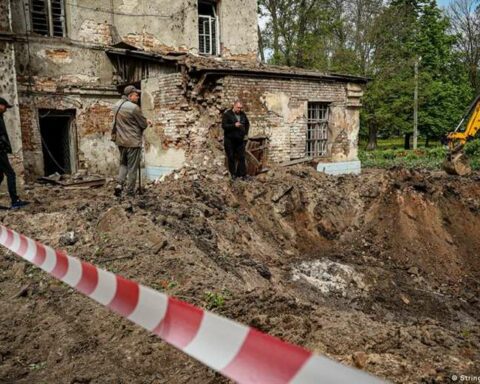March 1, 2023, 4:00 AM
March 1, 2023, 4:00 AM
By Rolando Ribera, architect
Why don’t they let the BRT work? Despite the completion of the civil and technological works and despite having the 30 BRT buses that arrived in our city in May 2021, the new transportation system in phase 1 A is not operating. Their tabas tremble! just thinking that the citizen, who uses a bus, can even try what decent and organized transport is. As simple as that, due to a lack of political will and mainly due to the petty agreements reached by the current mayor of the city with the wealthy leaders of the informal transport sector; the BRT is hostage to this municipal management.
The house is put in order first, before bringing people from the outside in. It is therefore on the rings where the largest number of services are located and a primary condition for choosing a BRT route in any city in the world is passenger demand. That, in the case of the first ring, presents a great demand from users with sixteen million (16,670,586) passengers/year, as of 2019. (Source: IDOM consultant contracted by CAF).
Currently in 2023, there are more than 17 million reasons (users per year) to have started with the first ring. And that, as planned, at this time (almost 3 years of this municipal management) phase 1B of the North South integration corridor should already be concluding, which, according to what they say, is the one that should have been done first, but if it was that way? Why don’t they do it?
Some got amnesia, they forgot that before the first ring had a public parking lane on each side and there were only two lanes of vehicular traffic in each direction, the same number of lanes as there are now. The old parking lane was eliminated since it could only accommodate 620 vehicles (adding both sides), to replace it, more than 800 free parking spaces were implemented on the perpendicular roads adjacent to the first ring, just one block away.
A third lane was inserted for the BRT route and emergency vehicles, given that the greater good lies in mobilizing in an orderly manner the more than 50,000 passengers per day that the first ring presents and at the same time prioritizing the passage of the hundreds of ambulances that circulate on this road, saving countless lives only with this prioritization.
It is untrue to assert that the project implemented in the first ring of our city is not a BRT. We present a simple list, easy to verify, about some characteristics and components that the BRT of the first ring has and what parameters are evaluated to qualify as BRT:
Be at least 3 km long (the first ring has more than 11 km of reserved lanes and 2.5 km of mixed traffic lanes), fare collection outside the bus, bus boarding at station platform level, planning of the service, control center (Urbarí), network connections with other corridors (integration with phase 1B and phase 2), hours of operation including late nights and weekends, overtaking lanes for emergency vehicles at stations, minimize vehicle exhaust emissions (gas buses), central stations (located in the central field), pavement quality, station design and station-bus interface, safe and comfortable stations, two doors on the bus, reasonable distances between stations, automatic doors in stations, communications, passenger information, integration with other public transport, bicycle parking, cycle paths, sidewalks and pedestrian safety, accessibility for the disabled in sidewalks and station platforms.
Regarding the curbs, which according to some “opinologists” are no longer used for these cases anywhere, we give as examples several BRT systems in operation in which these track separators are used, of similar dimensions and even greater height than those implemented in our city: Lagos BRT, Nigeria, concrete Segmented Block separator height 30 cm. Eco via BRT, Quito, Continuous concrete block separator height 20 and 60 cm. Trans Milenio BRT, Bogotá Colombia, concrete Segmented Block separator height 20 cm. Metropolitano de Lima BRT, Peru, separator Continuous concrete block height 20 and 70 cm. Trans Jakarta, Indonesia, concrete block separator height 70 cm.
They look for hairs in the milk, 5 cm more or 5 cm less, Blah! Blah! Blah! While the worst and most unsafe transport in all of Latin America operates across the street, our neighbors are transported like cattle. The reality is that, regardless of the technical reasons or where it has started to be implemented, conflicts and malicious opinions from informal carriers, politicians and some not very serious technicians, would be the order of the day; given that for some it is easier to destroy by skilfully using the path of systematic criticism, half-truths and falsehoods, casting doubt on this or any project in order to protect their petty interests.
Why the excessive desire to destroy what has been built? Because the BRT “is the nightmare of informality”, it promotes a change in the business model and the operating model. It is the total formality of the public transport system; fact that undoubtedly affects the interests of those who earn millionaire figures annually from informality and chaos.
What to do now? Order the more than 1,600 buses, inter-municipal minibuses and trufis that circulate per hour in the first ring. Put into operation the BRT already built, which has contracts for the “Concession for the Provision of High Capacity Massive Public Transport Service CN SMAF No. 30/2020”, which has the Concession for the Public Transport Collection and Ticketing System of the BRT CN SMAF 017/21, both current and since there is a complete fleet of 30 buses in the city (acquired by the contracted operators).
Then continue with the implementation of the North-South corridor, which complements the first phase of the four phases planned for the BRT system in the city of Santa Cruz de la Sierra.
For the greater good, informality cannot beat order…








